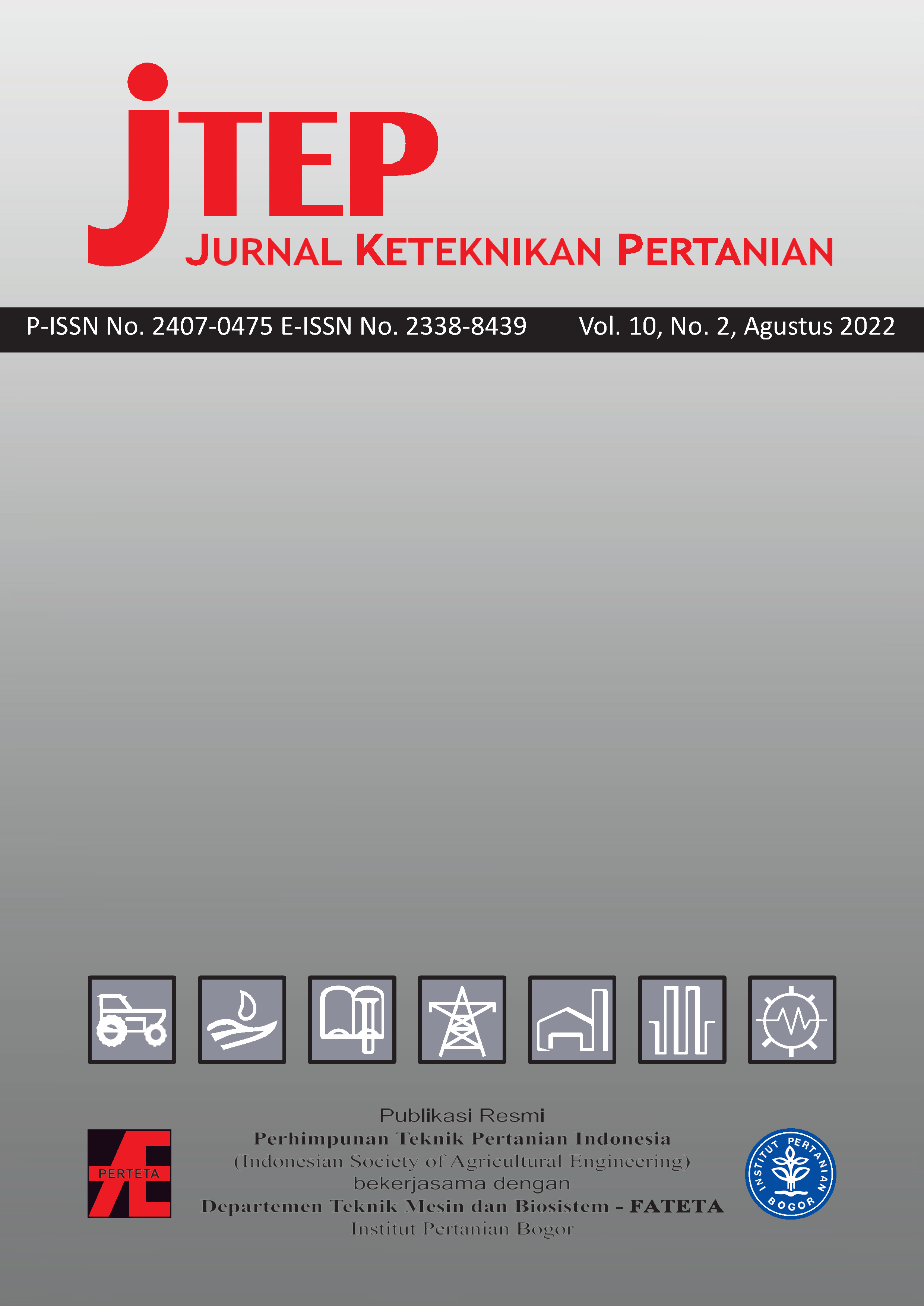Studi Gaya Pencabutan Ubi Kayu
Abstract
Harvesting of cassava is still mostly done manually by pulling cassava stems that are ready to be harvested. This study aimed to determine the amount of force required to pull cassava stems. The research was conducted on farmer's land in Bandar Agung Village, Bandar Sakti District, Central Lampung Regency. A sample of 50 cassava trees was selected to represent the center and four edges of 1-ha area sizing of 50-m x 200-m. Measurement of the pulling force of cassava was carried out using a winch supported by a triangular frame of iron pipe and equipped with a 100-kg chicken scale and rope. Parameters included force to uproot cassava stem, soil moisture content, soil hardness, stem circumference, plant height, and cassava tuber weight. The results showed that the uprooting force of cassava stem ranged from 20 kg (196 N) to 70 kg (686 N) with an average of 44.9 kg (440.2 N). The results also showed that the pulling force of cassava decreased with increasing soil moisture content with a range between 196 kN at soil moisture 15,9% and 686 kN at soil moisture 10%. Factors of plant height, stem circumference, and tuber weight also had a positive effect on the pulling force of cassava.
Authors

This work is licensed under a Creative Commons Attribution 4.0 International License.
Authors submitting manuscripts should understand and agree that copyright of manuscripts of the article shall be assigned/transferred to Jurnal Keteknikan Pertanian. This work is licensed under a Creative Commons Attribution-ShareAlike 4.0 International License (CC BY-SA) where Authors and Readers can copy and redistribute the material in any medium or format, as well as remix, transform, and build upon the material for any purpose, but they must give appropriate credit (cite to the article or content), provide a link to the license, and indicate if changes were made. If you remix, transform, or build upon the material, you must distribute your contributions under the same license as the original.

